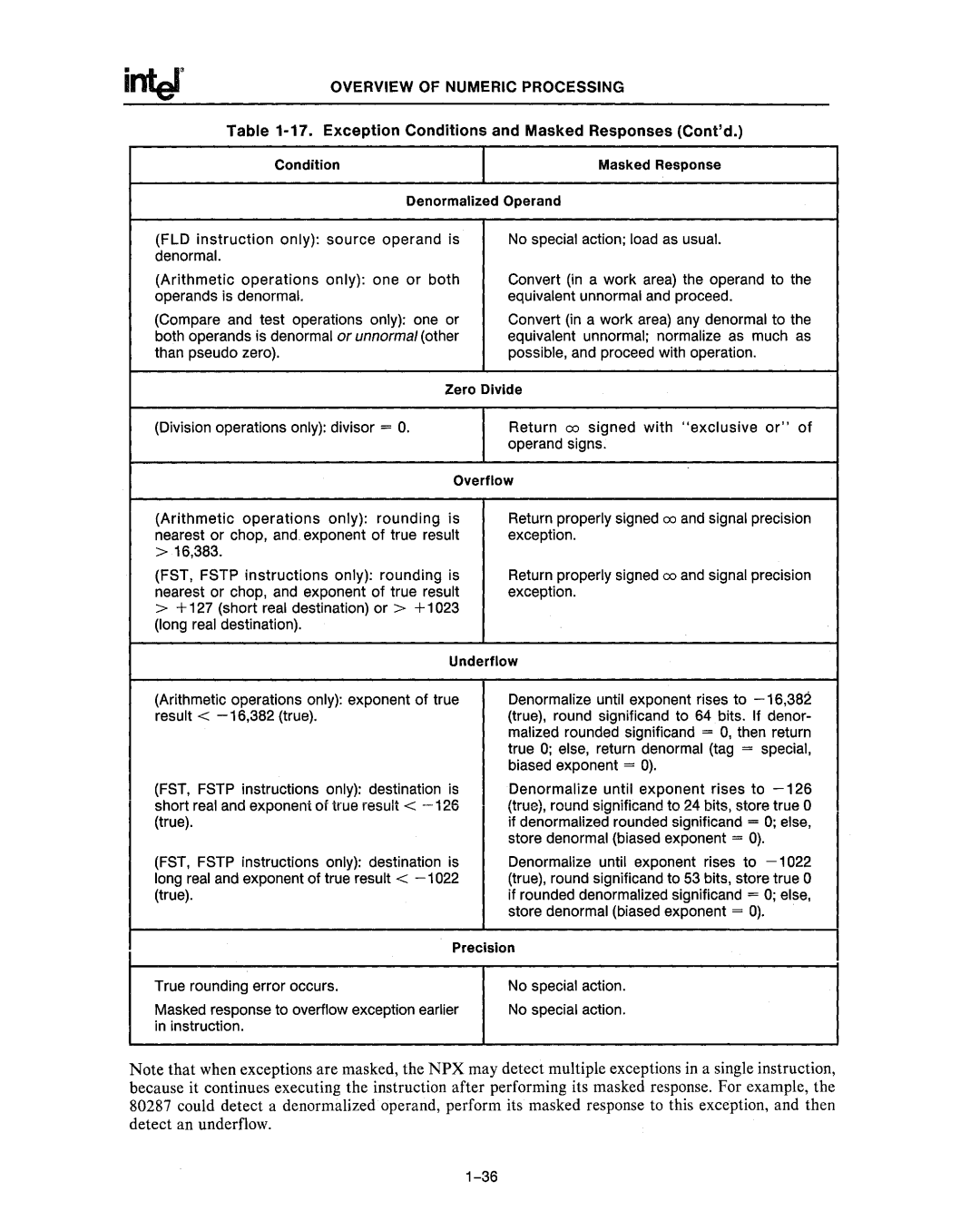
OVERVIEW OF NUMERIC PROCESSING
Table 1-17. Exception Conditions and Masked Responses (Cont'd.)
Condition | Masked Response |
Denormalized Operand
(FLD instruction only): source operand is denormal.
(Arithmetic operations only): one or both operands is denormal.
(Compare and test operations only): one or both operands is denormal or unnormal (other than pseudo zero).
No special action; load as usual.
Convert (in a work area) the operand to the equivalent unnormal and proceed.
Convert (in a work area) any denormal to the equivalent unnormal; normalize as much as possible, and proceed with operation.
Zero Divide
(Division operations only): divisor = O.
Return 00 signed with "exclusive or" of operand signs;
Overflow
(Arithmetic operations only): rounding is nearest or chop, and. exponent of true result
>16,383.
(FST, FSTP instructions only): rounding is nearest or chop, and exponent of true result
>+127 (short real destination) or> +1023 (long real destination).
Return properly signed 00 and signal precision exception.
Return properly signed 00 and Signal precision exception.
Underflow
(Arithmetic operations only): exponent of true result <
(FST, FSTP instructions only): destination is short real and exponent of true result <
(FST, FSTP instructions only): destination is long real and exponent of true result <
Denormalize until exponent rises to
Denormalize until exponent rises to
Denormalize until exponent rises to
Precision | |
True rounding error occurs. | No special action. |
Masked response to overflow exception earlier | No special action. |
in instruction. |
|
Note that when exceptions are masked, the NPX may detect multiple exceptions in a single instruction, because it continues executing the instruction after performing its masked response. For example, the 80287 could detect a denormalized operand, perform its masked response to this exception, and then detect an underflow.
